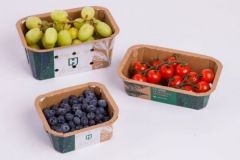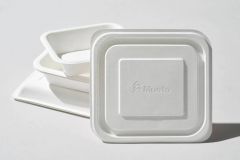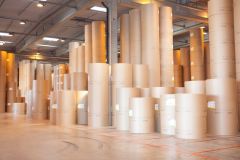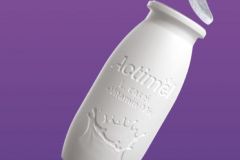Paper manufacturer UPM Specialty Papers has commissioned a study on sustainable food packaging trends in 2040. The report, produced by Smithers, is called Sustainable Food Packaging in 2040 solicited approximately 200 professionals from across the packaging value chain. This collective assessment yielded several interesting lessons.
According to this study, it appears that by 2040, consumers will no longer tolerate the choice between sustainability and convenience . Brands will need packaging solutions that provide good end-of-life options without compromising convenience and performance.
The report also notes that by 2040, packaging sustainability will no longer be a brand choice but will be enforced by strict government laws. "Many fossil fuel-based and non-recyclable packaging materials will be banned and companies will face heavy taxes and fines for packaging that is not reused or recycled."
According to this study, the share of polymer-based packaging in the world (currently at 40%) should be divided by two over the next two decades.
Fiber-based solutions are expected to account for over 40% of the total of all materials used for food packaging. "Fiber packaging is not the only solution to developing sustainable food packaging, but it is easier to communicate to consumers." notes Grace Kim, Global Packaging R&D Manager, CJ CheilJedang in South Korea.
One of the most significant changes to emerge from the report is the share of reusable packaging in 2040. Currently at less than 1%, it should increase to more than 20 of all packaging used by 2040.
However, two experts asked to comment on the study tempered this percentage, pointing out that it requires a significant change in industry and consumers.
Susan Cornish, an independent American recycling expert, estimates: "That reusable packaging will one day increase by more than 5 percent is optimistic. That would take us back nearly a century to when the milkman delivered milk in reusable bottles."
And Neil Rodgers, a Belgian packaging consultant (former senior scientist at Procter & Gamble), adds: "Instead, I predict that the growth in reusable packaging will be focused on dry foods and fresh produce."
But if recycling, reuse and composting will increase, 21% of food packaging will still end up in landfill and incineration even in two decades.
"The packaging industry will focus its research and development efforts to meet the growing consumer and regulatory demand for more recyclable and compostable packaging." says Maria Saloranta, Vice President Strategy and Business Development at UPM Specialty Papers. "As a result, we expect the share of fiber-based food packaging to increase, accelerated by innovations in barrier properties and the use of smart technologies that will help relay information quickly and easily to consumers."
"The use of polymer packaging will not be eliminated, but will focus on robust applications where high-strength barrier requirements and reusability are essential." notes Ciaran Little, global vice president of business development at Smithers.







